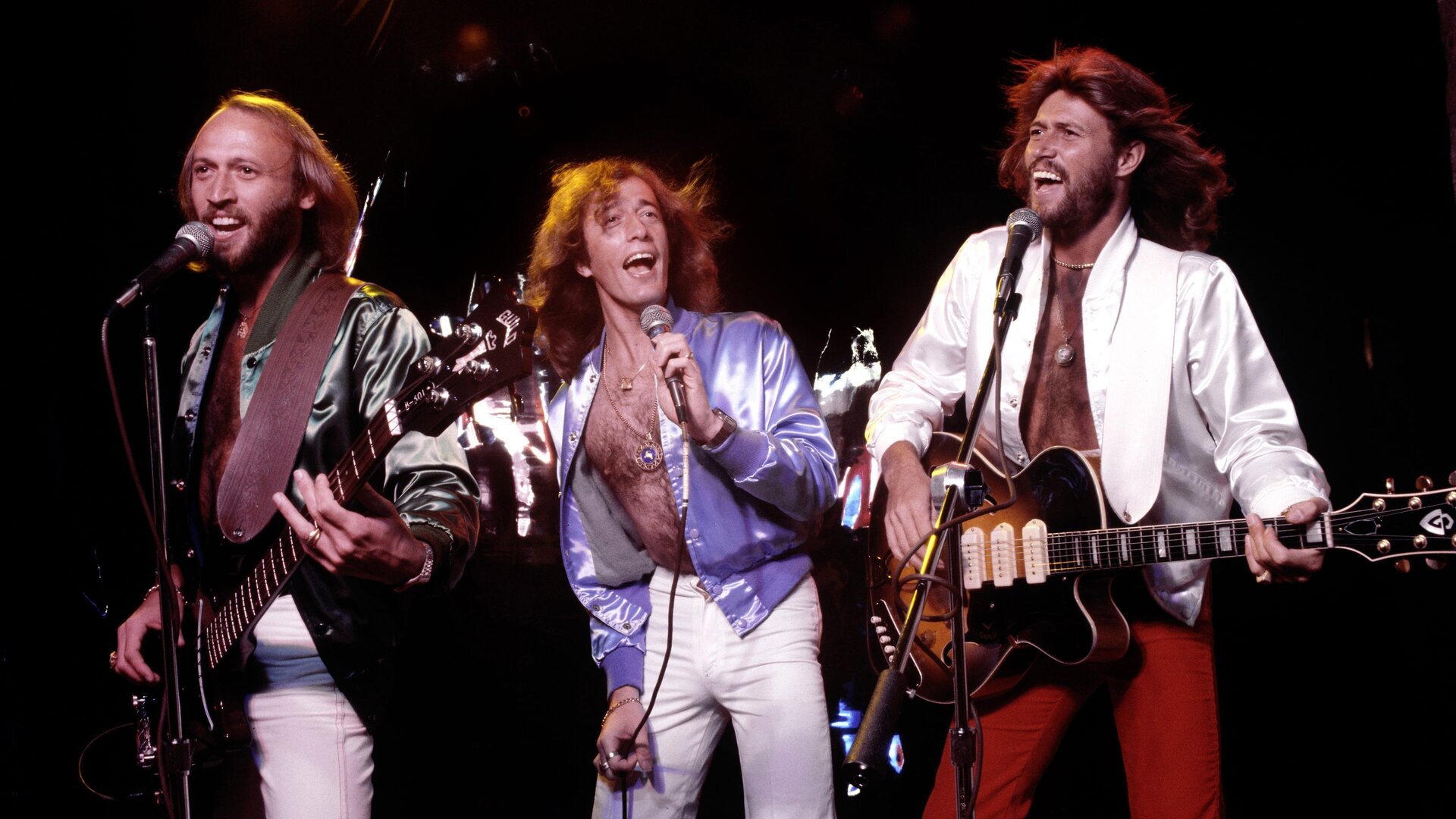
A Cry Beneath the Glitter: When Love Implodes Under Its Own Brightness
When “Tragedy” burst onto the airwaves in early 1979, it cemented Bee Gees’ dominion over the pop landscape. Released as a single from their monumental album Spirits Having Flown, the song raced to the top of both the U.S. Billboard Hot 100 and the UK Singles Chart, marking yet another apex in the Gibb brothers’ remarkable late‑’70s streak. It followed a string of No. 1 hits that had transformed them from soulful harmonizers into architects of an era-defining sound—music that shimmered with emotional excess and technical brilliance. But within “Tragedy”, behind its bombast and grandeur, lies something darker: a cry of existential panic masked in the glittering attire of disco.
The genesis of “Tragedy” speaks to the creative fever that consumed Barry, Robin, and Maurice Gibb during their most prolific years. The song reportedly came together during a writing session shared with their work on “Shadow Dancing” for Andy Gibb and “Too Much Heaven”, another of their own towering ballads. To imagine those sessions is to picture a trio at the height of inspiration—melodic ideas pouring forth almost faster than they could be captured. But where “Too Much Heaven” radiates warmth and tenderness, “Tragedy” lunges toward melodrama. Its very architecture—those detonating synth bursts, pounding drums, and Barry’s near‑desperate falsetto—embodies emotional collapse.
Lyrically, the song dramatizes heartbreak not as quiet sorrow but as total annihilation. The word “tragedy” itself becomes both diagnosis and exorcism, describing love’s end as an almost apocalyptic event. There is no subtle resignation here; instead, each verse builds toward a cathartic explosion that mirrors human fragility beneath layers of disco gloss. In this way, the Bee Gees turned personal despair into grand theatre—a hallmark of late‑’70s pop production where emotional truth was often expressed through excess rather than understatement.
Musically, “Tragedy” pushes boundaries even within the Bee Gees’ own lexicon. The track is a masterclass in sonic tension: relentless percussion from drummer Dennis Bryon merges with Alan Kendall’s guitar lines and Blue Weaver’s synthesizers to form a wall of sound that feels almost cinematic in scope. The famous “exploding pulse” effect—a percussive blast engineered by rhythmically triggering tape noise—became one of its defining sonic signatures, symbolizing heartbreak’s shockwave. Yet beneath this technical innovation beats an unmistakably human heart; Barry’s voice fractures between control and surrender, encapsulating both masculine vulnerability and theatrical heroism.
What makes “Tragedy” endure beyond its chart success is its dual identity—as dance-floor euphoria and existential lament. It captures that peculiar late‑disco paradox: music designed to move bodies while mourning broken souls. Long after the glitter faded from the Bee Gees’ sequined reign, this song still stands as one of their most revealing works—a mirror to love’s destructive power set to a beat too urgent to ignore. In “Tragedy,” ecstasy and ruin share the same pulse, each illuminating the other until all that remains is the echo of light collapsing into sound.